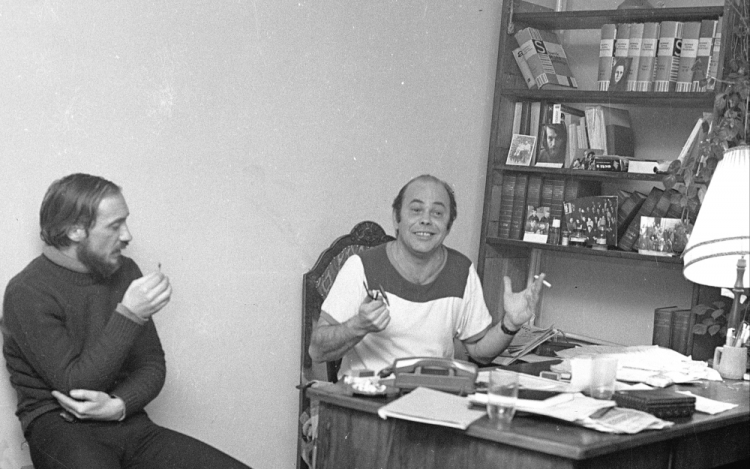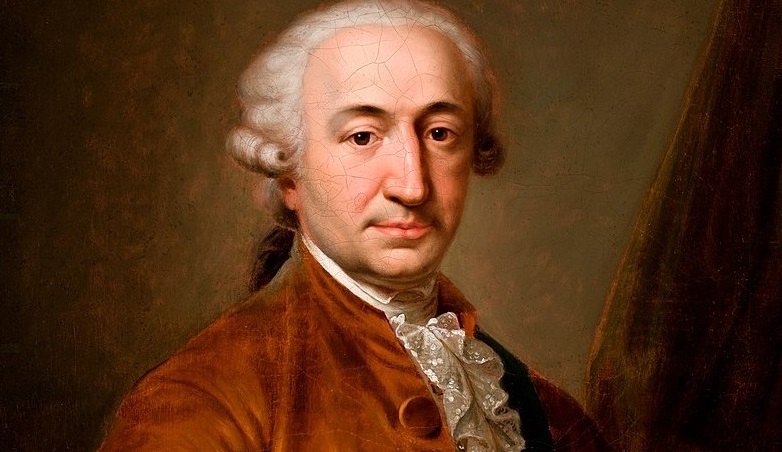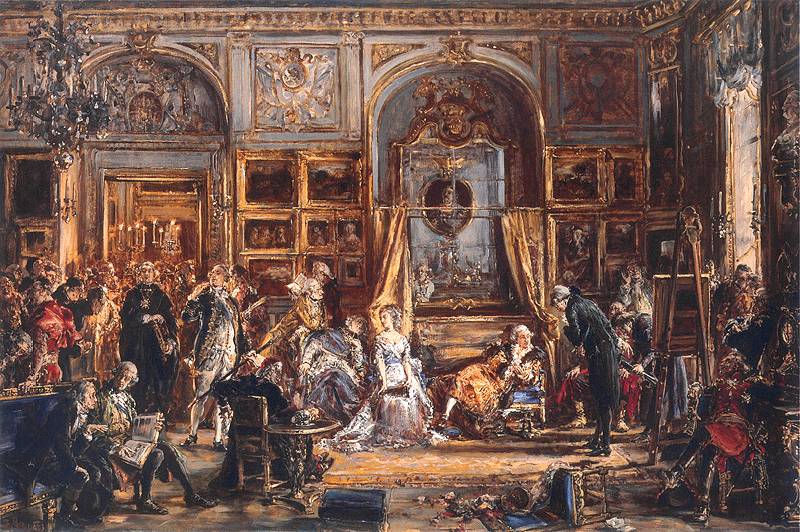This September marks the forty-sixth anniversary of the creation of the Workers’ Defence Committee, the first open opposition organisation in communist-ruled Poland since the post-war era.
by Jan Olaszek
The Workers’ Defence Committee (Polish acronym ‘KOR’) was founded in September 1976 but, in order to tell its story, we need to go back a few weeks. In late June, Prime Minister Piotr Jaroszewicz announced a large increase in food prices. This included meat, the lack of which was a particularly sensitive issue at the time. In response to this, workers from two towns – Radom and Ursus – were the most vocal in their protests, which led to fights with officers of the Citizen’s Militia. Strict repression was imposed on the protesters, but also partly on random people who were detained then – including the infamous ‘fitness trails’, i.e. pushing the detained person into a line of baton-wielding militiamen. Many workers were arrested at that time.
Soon, in reaction to this, the Warsaw intelligentsia took initiatives to defend the repressed. Several open letters were published on the matter. Opposition activists from various circles appeared in court corridors during the Ursus workers’ trials, showing their solidarity, and attempting to establish contacts with their families. The largest-scale campaign was the one for the families of repressed workers from Ursus, initiated by the ‘Black One’, a scouting group inspired by pre-war tradition, whose informal leaders were Antoni Macierewicz, Wojciech Onyszkiewicz, and Piotr Naimski. With time, others joined in, mainly from the Club of the Catholic Intelligentsia. Relief trips to Radom began a few weeks later; people from various milieus took part in them, including a ‘commando’ circle formed a few years earlier around Jacek Kuroń, a dissident and two-time political prisoner.

As the aid campaign developed, the idea of lending it a certain institutional framework emerged. The idea was to establish a body that, through the authority of its members, would lend credibility to the activities undertaken. This idea was supported mainly by Macierewicz (the originator and author of the name [Workers’ Defence Committee]), Naimski, and Onyszkiewicz. It was supported by Kuroń, who was in the army at the time, and Jan Józef Lipski, a literary historian and critic previously linked to the Home Army, who had been involved with the opposition for years. At the beginning of September 1976, a search for Committee members began, conducted chiefly among people of the older generation, known in intelligentsia circles.
Young and old
On 12 September, during a meeting held at the home of Edward Lipiński – a member of the Polish United Workers’ Party (Polish acronym ‘PZPR’) but a long-time sympathiser of the opposition, an economist – with a large participation of intellectuals and writers linked to the opposition, among others, some doubts emerged. It was feared that the authorities would perceive the establishment of the Committee as a provocation and gain a pretext for harsh repressions. Talks were to continue. The following day’s meeting was attended by Kuroń, who supported the young people’s efforts to set up the Committee. The young perceived the caution of opposition seniors as a sign of opportunism. Macierewicz, Naimski and Onyszkiewicz decided to establish the Committee themselves. It was to be formed irrespectively of whether or not the older and better-known people decided to get involved. The ‘elders’ had already received a differently worded proposal: to join an existing initiative. The initiators of the KOR began collecting signatures under the Committee’s first-ever document.
Forwarded to the West and distributed uncensored, the paper on the formation of the KOR was signed by 14 people. The former communist Kuroń was joined by the Home Army soldier and Warsaw Kedyw (Directorate of Diversion) commander Józef Rybicki. The document also bore the signatures of both Father Jan Zieja and the activist of the Club of the Catholic Intelligentsia, Wojciech Ziembiński (known, inter alia, for his involvement in commemorating historical anniversaries), as well as the declared atheist Lipski. The pro-independence socialist tradition was strongly represented by Adam Szczypiorski, a former MP in the Second Republic, Antoni Pajdak convicted in the Trial of the Sixteen, as well as lawyers Ludwik Cohn and Aniela Steinsbergowa, and Lipiński.
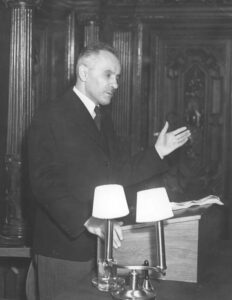
Aside from the abovementioned, the Committee also included Jerzy Andrzejewski, a writer known in particular for Ashes and Diamonds (but who did not participate in the current work of the Committee), the New Wave poet Stanisław Barańczak, as well as Macierewicz and Naimski. In the following weeks, months, and years, new people joined the body: representatives of the intellectual elite who were sympathetic to the opposition and generally younger opposition activists, whose membership in the Committee gave them a protective umbrella of sorts. From the very beginning, it was clear that the formal members of the Committee were accompanied by a large group of collaborators, often equally or even more committed than them.
The fundamental principle of its operation was openness. The names and even addresses of its members were published under documents signed by the Committee. The justification for this was the Committee’s attachment to legality. Reference was made to a law dating back to the Second Polish Republic, which allowed for the establishment of such bodies in extraordinary situations without the need to obtain permission from the authorities or even register them. This type of activity, modelled in part on Russian dissidents, worked well, as proven by the fact of its adoption by competing opposition milieus.
Help for the arrested or something more?
Initially, the KOR was to organise aid, both financial and legal, for the participants in June 1976, and gather information about the repressions taken against them. It provided information about its activities through the documents it signed, which publicised the repressions, and later also about opposition initiatives; it also presented diagnoses of the situation in various areas. The contents of the Committee’s documents were broadcast in Polish to radio stations in the West, primarily Radio Free Europe, or through the first independent periodicals published outside censorship.
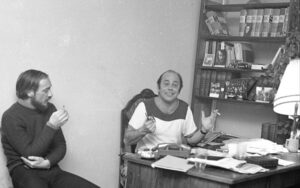
After a year of existence of the Workers’ Defence Committee, its formula was extended and it took on the name of the Committee for Social Self-Defence, ‘KOR’. From then on, the aim of its activities became the defence of citizens against repression by the authorities, fighting for the rule of law, and respect for human rights. A special unit was quickly created to collect information about repression, verify it, and organise help – the Intervention Bureau. Its work was headed by Zbigniew and Zofia Romaszewski. This model of work organisation was characteristic for the KOR, which patronised and provided an umbrella for various initiatives created by its members and collaborators.
This was also the case with uncensored periodicals: Biuletyn Informacyjny, whose editors were Seweryn Blumsztajn and Joanna Szczęsna, Głos, created mainly by Antoni Macierewicz’s milieu, and Krytyka, created by people around Adam Michnik and Jacek Kuroń (its editor was Stefan Starczewski). A special magazine was Robotnik, created, inter alia, by Helena Łuczywo, Jan Lityński, and Ludwika and Henryk Wujec. The circulation of this independent periodical reached tens of thousands of copies. All these magazines, just like the literary titles Zapis and Puls, as well as books published by the Independent Publishing House, were created in home conditions. They were printed on printing presses created by the oppositionists themselves, known as frames, or on duplicators smuggled in from abroad. All this was done in conspiracy. Independent printing was the only clandestine element of the openly operating KOR opposition. Those few initiatives gave birth to an independent publishing movement, which quickly developed in Poland on a scale that had been unprecedented anywhere in the world.
Scouts and ‘commandos’
KOR members and collaborators dealt with the activation of various circles: workers, peasants and students, which resulted in the formation of separate organisations. KOR members were also involved in organising lectures in private homes, street demonstrations, and hunger protests. A particularly valuable initiative was the attempt to establish contact with dissidents from other countries of the Soviet bloc. This was most notably successful in relations with the Czechs, resulting in several meetings at Mount Snieżka, although it is also worth remembering Zbigniew Romaszewski’s trip to Moscow, and his meeting with Nobel Prize winner Andrei Sakharov.

All these activities consisted of many small, seemingly trivial, acts: typing, meeting someone, transporting something, and making one’s apartment or car available for opposition activities. However, all of these involved high risk and a huge amount of work. Exciting situations, such as daring escapes from political police officers, also took place, but not that often. Sometimes it was funny, which can be seen in dozens of anecdotes in the memoirs of those years, but it was also terrible, such as when the militia broke into Jacek Kuroń’s flat and beat up his wife and son, as well as Adam Michnik and Henryk Wujec. Wujec’s face was permanently mutilated as a result of this attack.
The KOR’s uniqueness was also based on the fact that it managed to survive those few years in spite of major differences between its activists. Even then, conflicts erupted between them. One side of this dispute was formed by Antoni Macierewicz’s circle, which originated from the Black One. It included Piotr Naimski, Ludwik Dorn, and Wojciech Fałkowski (Wojciech Onyszkiewicz was no longer closely associated with the Macierewicz milieu in subsequent years). This circle played a key role in launching a campaign to help workers repressed in June 1976, leading to the establishment of the Committee, and later publishing the Głos journal. Their opponents in internal disputes were mainly members of Jacek Kuroń’s circle, originating from the ‘commando’ environment (with Adam Michnik, Seweryn Blumsztajn and Jan Lityński at the forefront), which played an increasingly important role. At the same time, there were many people who did not fit into this division, such as Jan Józef Lipski, Józef Rybicki, or Zbigniew and Zofia Romaszewski, although all of them were closer to the milieu grouped around Kuroń and Michnik.
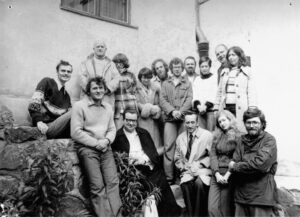
These two circles differed from one another in many respects. The former referred to the traditions of pre-war scouting, while the latter to those of the scouting formula developed in communist Poland and known as ‘Walterowcy’. The ‘commandos’ appreciated the importance of the revisionist tradition, while people from the circle of the Black One approached it with distrust at best. Some of the people from Kuroń’s milieu came from families connected with the communist movement, which distinguished them from the majority (with the exception of Ludwik Dorn) of Macierewicz’s supporters, who were in favour of emphasising independence traditions more strongly than the ‘commandos’. The distance of Kuroń’s milieu to the use of these slogans remains, to this day, the subject of unfair attacks, also formulated by his former opponents from Macierewicz’s milieu. According to the narrative created by authors sympathising with the Głos group, only its members were actually in favour of regaining independence and changing the political system, while the rest were solely interested in improving the socialist state. ‘They were revisionists, while we were independentists,’ Piotr Naimski stated categorically in one of his memoirs. This is an unfair accusation. The postulate of independence was present in the programme declaration of the Robotnik magazine, which was created mainly by people close to Kuroń, as well as in texts written by Kuroń himself before the KOR was established.
This resulted mainly from the philosophy guiding the entire Committee, about which Jan Józef Lipski wrote most aptly in the conclusion of his book on the history of the Committee: ‘What were we fighting for? At first, simply to ensure that those workers who had been beaten, imprisoned or thrown out of work, were not left alone, and to help them and their families get through the hardest period of the fury directed against them by the apparatus of violence. Later on, we broadened our objectives, with two main ones at the end of the road: independence and democracy. We tried not to delude anyone that they were easy to achieve. So, on a day-to-day basis, we tended to limit ourselves to talking and writing about more immediate tasks and, above all, working hard to achieve them. We did not love the declamations, which some people held against us (…) Every day, we had to deal with something else: someone was beaten here, someone was fired there, people lacked medicine (we lost the case, but we were not at fault), censors confiscated a poet’s works yet again, people are working beyond their strength in the mines, the peasants’ land is being confiscated from them, a chapel was destroyed where people could pray, and so on and so forth, day by day, until sometimes one felt truly helpless.’ And yet KOR activists did not give up.
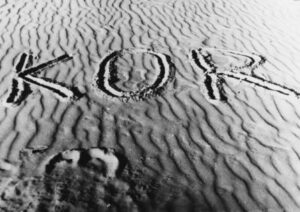
Disrespect, harassment, trial? The communists ruling in Poland adopted various strategies of action towards the KOR. Initially, they attempted to ignore its existence, but later they generally employed harassment tactics: KOR activists were followed, intimidated, wiretapped, detained for forty-eight hours, searched, thrown out of work, and sometimes even beaten. In the spring of 1977, the Workers’ Defence Committee’s collaborator, Stanisław Pyjas, was found dead, which was perceived as an effect of political police activity (the case remains unexplained to this day). The KOR then organised protests, which ended with the arrest of many of its members. Ultimately, it was decided not to hold a trial, and the harassment of opposition activists resumed.
Members and collaborators of the Workers’ Defence Committee played a significant role during the August 1980 strikes and the creation of Solidarity. The world-famous Lech Wałęsa had also cooperated with the KOR even before August 1980. The Committee’s history started coming to an end at that time, although it was not formally dissolved until the autumn of 1981. Its spirit accompanied the Polish opposition throughout the 1980s.
Author: Jan Olaszek
Translation: Mikołaj Sekrecki

